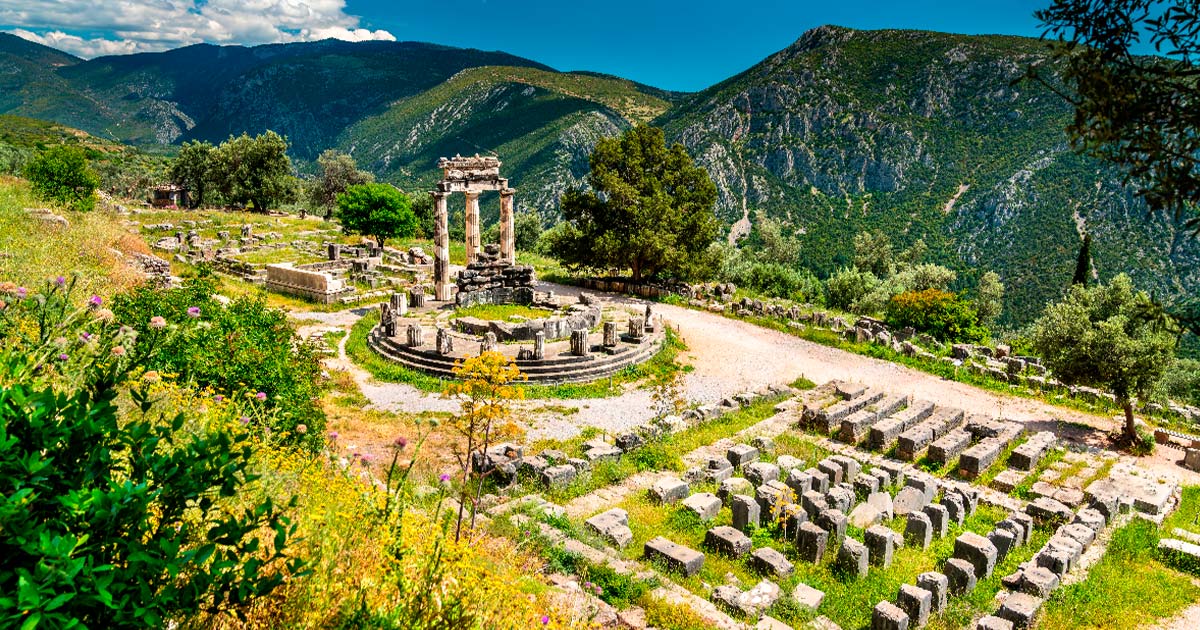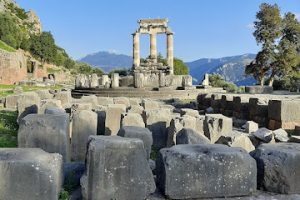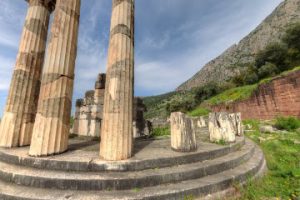Ancient Delphi: An Explanation of the Universe’s Center


Delphi, deemed the Omphalos or Navel of the Earth by the Ancient Greeks, stands as an extraordinary reminder of their spiritual and architectural prowess. Nestled on Mount Parnassus, it thrived between the 6th and 4th centuries BC, attracting pilgrims from the Mediterranean in search of guidance from the revered Oracle of Delphi, the Pythia.
The sanctuary seamlessly integrates with the natural landscape, reflecting the Greeks’ belief in the inherent sacredness of the site. Delphi’s design, featuring the Temple of Apollo and a strategically positioned theater, showcases the Greeks’ architectural finesse. Treasuries, including the Tholos of Delphi, adorned with sculptures, further enhanced the spiritual ambiance.


The journey to the Great Temple involved passing through the Marmaria complex, the gymnasium, and the Castalian Spring. The temple, with columns on all sides, invited contemplation of the Delphic Maxims inscribed on its front, emphasizing self-awareness and humility.
The Oracle’s chamber, situated above a chasm emitting vapors, provided a mystical setting for prophetic consultations. As the Pax Romana waned, Delphi faced neglect and seismic challenges, leading to its decline. Nevertheless, the ancient sanctuary’s spiritual resonance endures, with its mountainous surroundings and unique geological features contributing to its timeless allure.